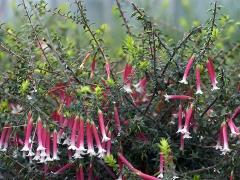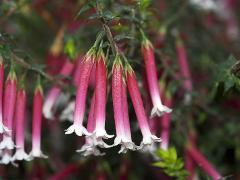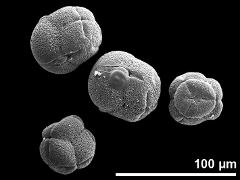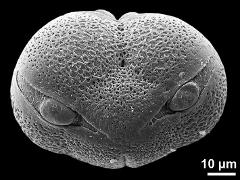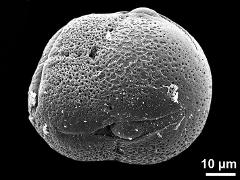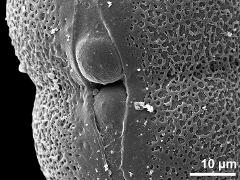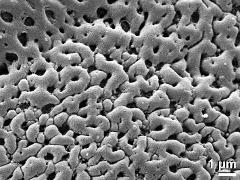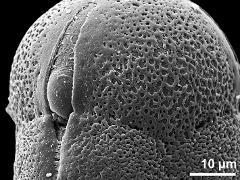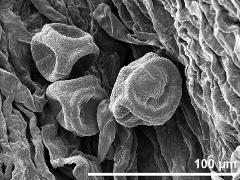Epacris longiflora
Taxonomy: Angiospermae, Ericales, Ericaceae, Epacris
Published: 2017-01-17
Pollen Description
Shape, Size and Aperture
pollen unit: tetrad, dispersal unit and peculiarities: tetrad tetrahedral, size (pollen unit): large (51-100 µm), size of hydrated pollen (LM): -, shortest polar axis in equatorial view (LM): -, longest polar axis in equatorial view (LM): -, shortest diameter in equatorial or polar view (LM): -, longest diameter in equatorial or polar view (LM): -, pollen class: tetrad, polarity: heteropolar, P/E-ratio: oblate, shape: -, outline in polar view: circular, dominant orientation (LM): -, P/E-ratio (dry pollen): oblate, shape (dry pollen): -, outline in polar view (dry pollen): circular, infoldings (dry pollen): -, aperture number: 3, aperture type: colporus, aperture condition: tricolporate, colporate, aperture peculiarities: -
Ornamentation and Structure
LM ornamentation LM: -, nexine: -, sexine: -, SEM ornamentation SEM: perforate, suprasculpture SEM: -, TEM tectum: -, infratectum: -, foot layer: -, endexine: -, intine: -, wall peculiarities: -, supratectal element: -
Miscellaneous
pollen coatings: -, reserves in cytoplasm: -, cell number: -, Ubisch bodies: -
Annotations: many aborted monads, often only a single or two fertile monads remaining, forming pseudotriads, pseudodyads and pseudomonads
Author(s) of diagnosis: Halbritter, Heidemarie
Pictures
Picture legend
- flower(s), photographer: Buchner, R.
- flower(s), photographer: Buchner, R.
- tetrads with few fertile monads - fresh, rehydrated (water) & critical point dried & sputter coated with gold, photographer: Halbritter, H.
- tetrad with 2 aborted monads (pseudodyad) - fresh, rehydrated (water) & critical point dried & sputter coated with gold, photographer: Halbritter, H.
- tetrad with 3 aborted monads (pseudomonad) - fresh, rehydrated (water) & critical point dried & sputter coated with gold, photographer: Halbritter, H.
- apertures - fresh, rehydrated (water) & critical point dried & sputter coated with gold, photographer: Halbritter, H.
- exine surface - fresh, rehydrated (water) & critical point dried & sputter coated with gold, photographer: Halbritter, H.
- detail of pseudomonad - fresh, rehydrated (water) & critical point dried & sputter coated with gold, photographer: Halbritter, H.
- dry tetrads - dry, sputter coated with gold, photographer: Halbritter, H.
Literature
- (1998) Preparing living pollen material for scanning electron microscopy using 2,2-dimethoxypropane (DMP) and criticalpoint drying. Biotechnic Histochem 73: 137–143
Copyright and Citation
Cite this publication as:
Halbritter H., Buchner R. 2017. Epacris longiflora. In: PalDat - A palynological database. https://www.paldat.org/pub/Epacris_longiflora/302958;jsessionid=56D5468FABDB02DCDE3BFF3A0660BA52; accessed 2025-10-31

